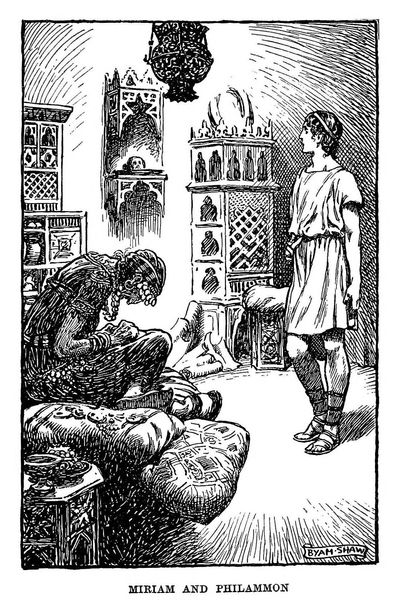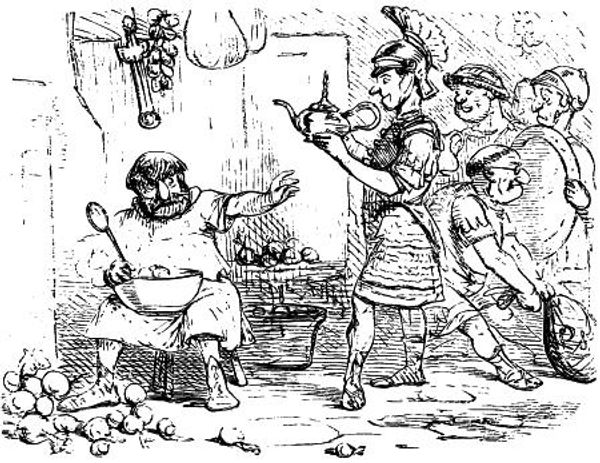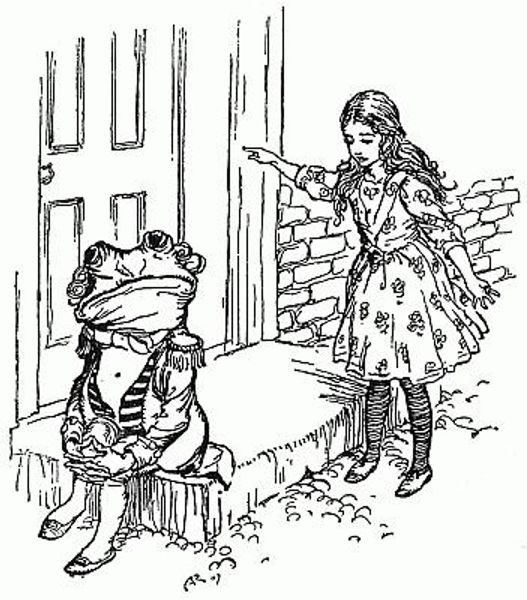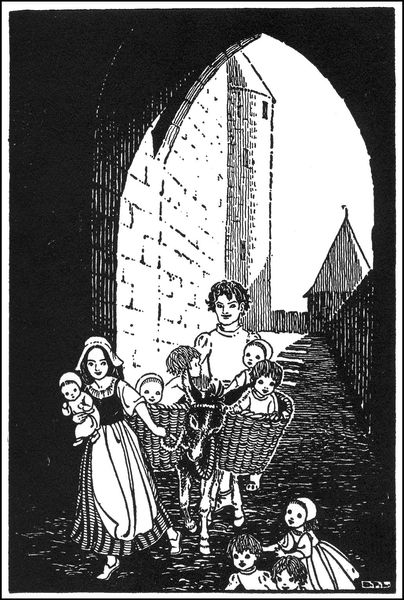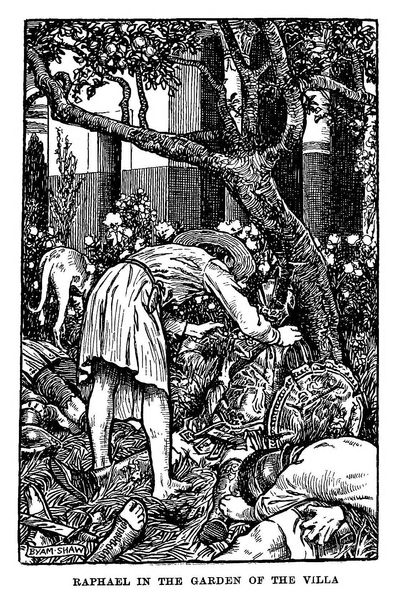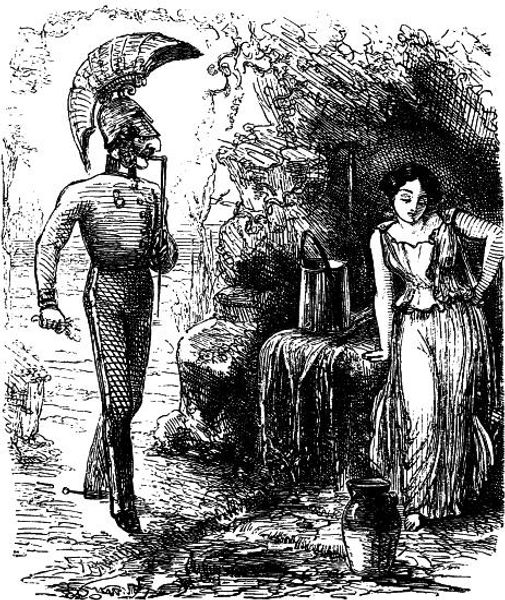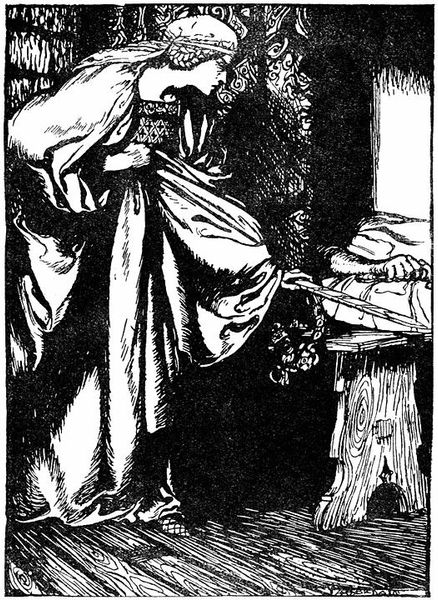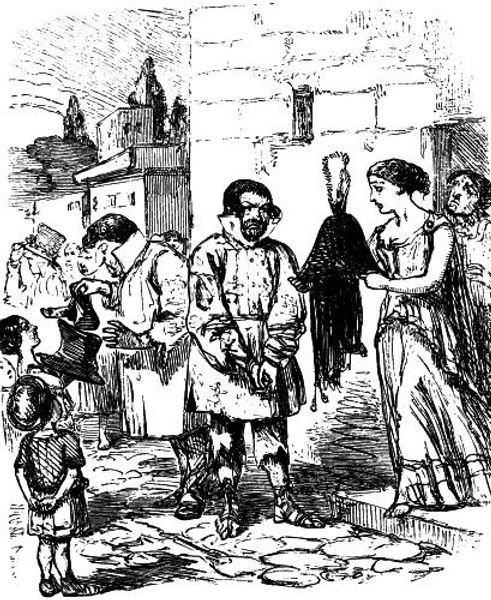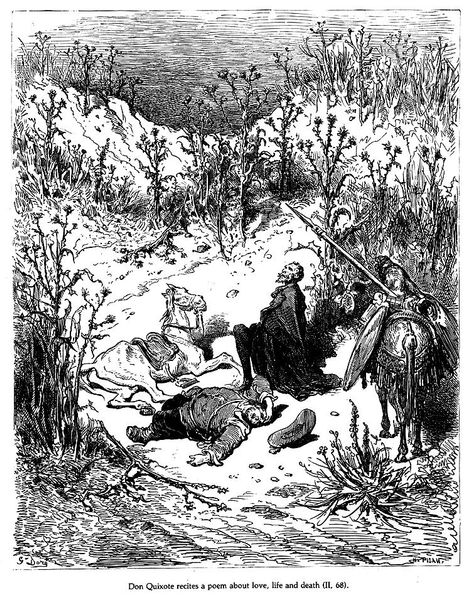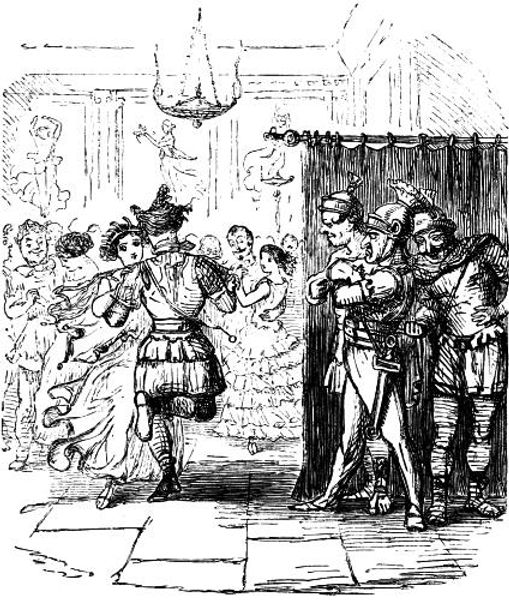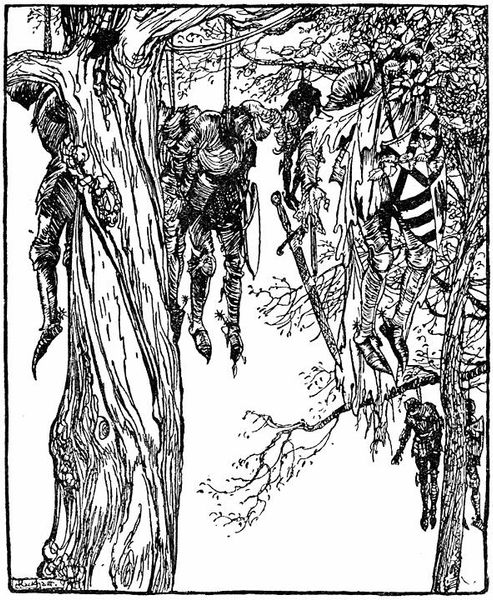
drawing, ink, pen
#
drawing
#
line-art
#
medieval
#
narrative-art
#
pen illustration
#
line drawing illustration
#
figuration
#
line art
#
ink line art
#
ink
#
line
#
pen
Copyright: Public domain
Curator: Arthur Rackham brings us into a medieval world with this ink and pen drawing, entitled "The child is given over to Merlin." Editor: There's an unsettling feeling about this work; the crisp lines and high contrast create a dramatic atmosphere, a sense of foreboding. I can almost feel the weight of the choice being made in the composition. Curator: Absolutely, notice how Rackham employs the stark, medieval line to depict class divisions, from the coarse fabrics of the peasant presenting the child to the fine dress of the noble woman and the cold steel of the knight, a hierarchy built into the very materials and labor depicted. Editor: I see a potent visual metaphor in the placement of figures – the somber woman and the burdened peasant positioned against the imposing stone wall and doorway. Those architectural elements are more than backdrop, aren't they? They symbolize an unyielding fate. The very texture of the stone suggests centuries of power. Curator: Precisely, it is fascinating how Rackham subtly comments on the social structure through the garments alone – the roughspun clothes signifying the lower class’s reliance on simple, locally sourced material. While the elite's dress speaks to wealth and access. It suggests a whole system of trade and manufacture that underpins this exchange. Editor: The iconography feels charged; the humble man offering up the swaddled babe recalls familiar themes. Perhaps even hinting at larger cultural narratives surrounding sacrifice. Notice the slight figure disappearing into the top left shrubbery, are they overseeing the act? Are we meant to question whether this is actually the wizard Merlin? Curator: Indeed! This drawing operates on many levels. It engages with the pre-industrial means of production, showing a society deeply rooted in the material world. Yet, at the same time, the artist builds the piece to transcend that into an important historical and mythological exchange. Editor: I'm left contemplating how Rackham captures the human element within these power dynamics. There’s sorrow in the woman's bowed head, a resignation that resonates beyond just a simple scene. Curator: Yes, and seeing it from this lens reminds me that we should think more critically about how these drawings aren’t just about representing historical events, but also how these social relationships manifest in the very way art is produced and circulated. Editor: And I am intrigued how the image serves as a touchstone, connecting us to enduring myths and their exploration of sacrifice, destiny, and hidden forces shaping our world.
Comments
No comments
Be the first to comment and join the conversation on the ultimate creative platform.

